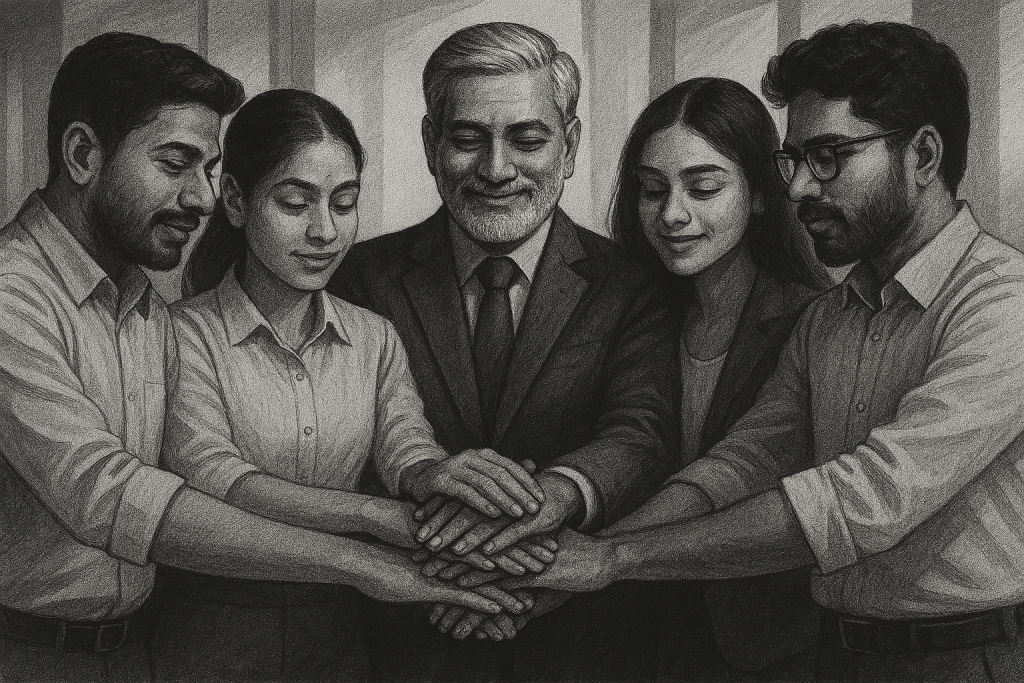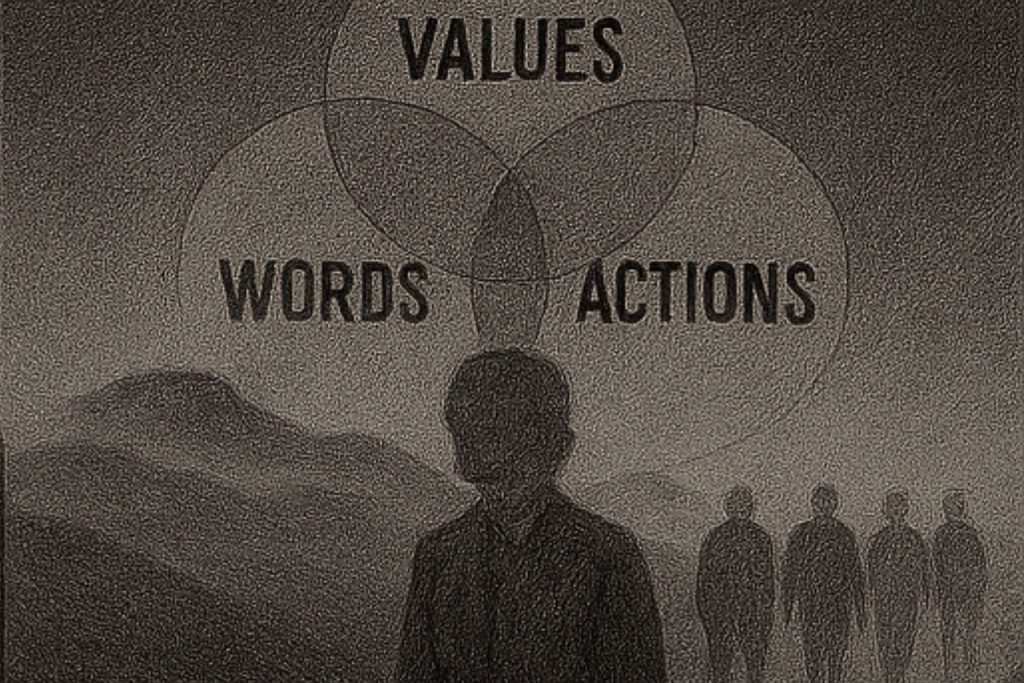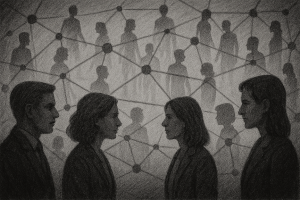There is a quiet but undeniable truth unfolding in the corridors of today’s organisations – the old leadership playbook is beginning to fray. The models that once defined what effective leadership looked like, those built on hierarchy, control, and clarity of direction, are steadily losing their relevance in a world that is changing faster than any organisation’s ability to script certainty. The economic shocks of recent years, the acceleration of technology and AI, and the entry of a workforce that values meaning as much as money have together rewritten the expectations of what it means to lead.
For the first time in decades, leadership is being redefined not by competence or charisma, but by trust, transparency, and purpose – the three currencies that now determine the credibility and longevity of every leader. The unspoken social contract between those who lead and those who follow has shifted from one based on compliance to one rooted in shared belief. People no longer follow leaders because they have to; they follow them because they want to – and that single distinction changes everything about the way leadership must now show up.
Why the Old Template No Longer Works

For a long time, leadership thrived on the industrial logic of efficiency and predictability. The leader was the custodian of answers, the keeper of information, and the enforcer of standards. In a slower, more linear world, this model worked. But today, when technology displaces certainty overnight and collaboration happens across continents and screens, the command-and-control architecture of leadership feels like an anachronism.
We now live in a world where information is democratised, talent is mobile, and employees measure credibility not by title but by authenticity. The psychological contract that once held the workforce together – “you give me security, and I will give you loyalty” – has been replaced by a far more complex one: “you give me purpose, and I will give you my best.” That shift is not rhetorical; it is deeply human. It represents a generation that does not want to be managed but inspired, that values voice over visibility, and that sees leadership as partnership, not power.
The challenge, then, is not whether leaders can adapt their strategy; it is whether they can adapt their stance – from being certain to being self-aware, from being directive to being deeply authentic.
Trust: The New Capital of Leadership

Trust has always been a moral currency, but today it has become an economic one. Research by Deloitte shows that organisations with high levels of trust experience nearly twice the customer loyalty and three times the innovation output of those with low trust – not because trust can be engineered, but because it creates the psychological space for people to contribute without fear.
The leaders who command trust today are not the ones who speak the most confidently, but the ones who show the most congruence – who mean what they say, do what they promise, and own what they don’t know. Trust is no longer earned through authority; it is earned through consistency of character. It is built quietly in the micro-moments of leadership – in how feedback is given, how failure is handled, how credit is shared, and how fairness is demonstrated when decisions become hard.
When leaders demonstrate vulnerability with steadiness and conviction, they communicate not weakness but courage – the courage to lead through honesty rather than image. In times of relentless change, trust is the one form of stability that organisations cannot afford to lose, because it is the only anchor that outlasts uncertainty.
Transparency: The Antidote to Uncertainty

For years, leadership wisdom suggested that information should be shared only when it was complete and clarity was guaranteed. In an era defined by complexity, that is no longer possible. Employees do not expect their leaders to have all the answers; they expect them to have the courage to say when they do not.
Transparency today is not about overexposure; it is about intentional openness – the kind that builds inclusion by inviting people into the conversation before the decisions are made, not after they are announced. It is the difference between communicating for compliance and communicating for connection.
In environments where uncertainty is inevitable, transparency becomes the only reliable way to build collective confidence. When leaders articulate what is known, acknowledge what is still unfolding, and share how they are making sense of it, they allow people to move from speculation to participation. The absence of information no longer creates discipline; it creates distrust. In contrast, the presence of honest communication creates psychological safety – the foundation upon which creativity, accountability, and commitment are built.
Purpose: The Ultimate Organising Principle

There was a time when purpose was seen as a luxury – something aspirational that sat on the wall, safely removed from the pressures of business. That time has passed. Today, purpose is the new productivity. It is what aligns performance with meaning and turns compliance into conviction.
McKinsey’s global research indicates that employees whose personal purpose aligns with their organisation’s purpose are five times more likely to report engagement and four times more likely to stay longer. But beyond the statistics, what this really signals is a deeper human truth: that people want to work not just for something, but toward something.
Purpose-driven leadership demands that leaders connect profit with principle and translate ambition into impact. It is not about being idealistic; it is about being intentional. It is about defining success in terms of both results and resonance – the ability to achieve business outcomes while advancing something that feels morally and socially worthwhile.
When leaders articulate and live their purpose, they stop managing tasks and start shaping belief. In doing so, they transform compliance into commitment – a far more enduring form of motivation.
From Command to Credibility: Redefining the Leadership Blueprint

If leadership in the past was about control, the future of leadership will be about credibility. It will not be enough for leaders to be informed; they must be believable. It will not be enough for them to be visionary; they must be visible – not as performers on a stage, but as participants in the struggle.
Credibility is built through coherence – when a leader’s values, words, and actions align even under pressure. The leaders who thrive in this new environment are those who can hold paradoxes with grace: confidence with humility, speed with reflection, ambition with empathy. They understand that their role is not to be the loudest voice in the room but the clearest one.
In this sense, leadership is moving away from being a function of hierarchy to becoming a function of humanity. The leaders who can balance authority with authenticity will not only attract trust but also sustain it in moments when the organisation most needs belief.
The Leadership Redesign That Organisations Need
At Chrysalis, we see this shift every day. The questions that leaders bring to our programs are no longer just about managing performance; they are about redefining identity. They ask how to lead with authenticity in a world that rewards appearances, how to hold people accountable without eroding trust, and how to lead teams that crave autonomy but still need direction.
Our work with senior leaders across industries shows that this new leadership era requires more than new competencies; it requires a new consciousness. That consciousness cannot be trained through frameworks alone; it must be cultivated through reflection, dialogue, and practice.
By creating spaces where leaders can test vulnerability, explore moral dilemmas, and confront their own assumptions, we help them internalise what this new social contract really demands – the courage to lead transparently, the discipline to act purposefully, and the humility to earn trust rather than assume it.
The leaders who can embody this contract will find that they no longer need to drive engagement; they will naturally inspire it.
The Call to Courageous Leadership

This new age of leadership does not reward the loud or the unflinching; it rewards those who can balance resilience with reflection. It calls for leaders who are willing to speak less and listen more, to acknowledge uncertainty without abdicating accountability, and to use their influence not to dominate but to dignify.
The leadership of tomorrow will be measured not by how much control one exerts, but by how much belief one creates. It will not be defined by followers, but by trust. It will not be validated by visibility, but by transparency. And it will not be remembered for profit alone, but for purpose.
Trust, transparency, and purpose are not new words in the leadership lexicon. But in an era defined by fragility, flux, and fatigue, they have become the only sustainable currencies of credibility.
The leaders who understand this – and live by it – will not just adapt to the future of work; they will help define it.


